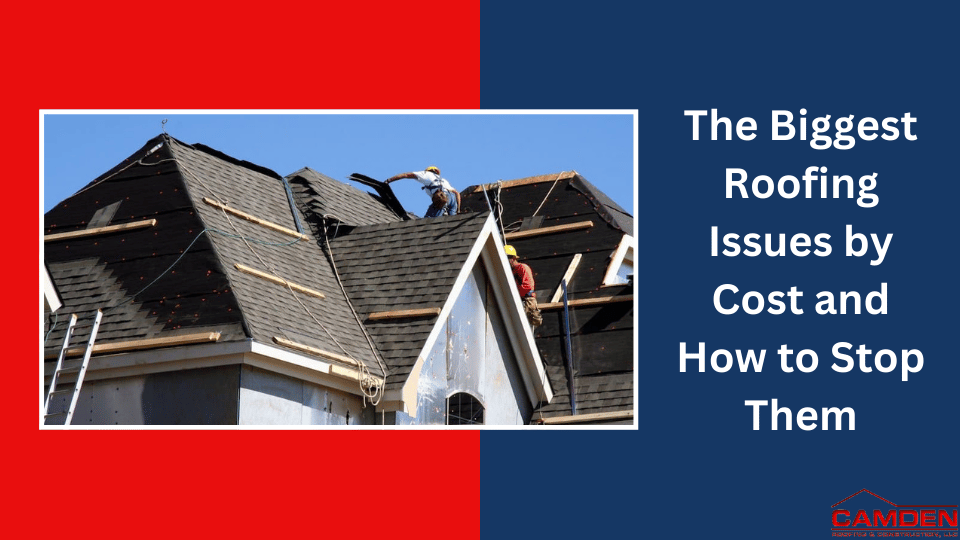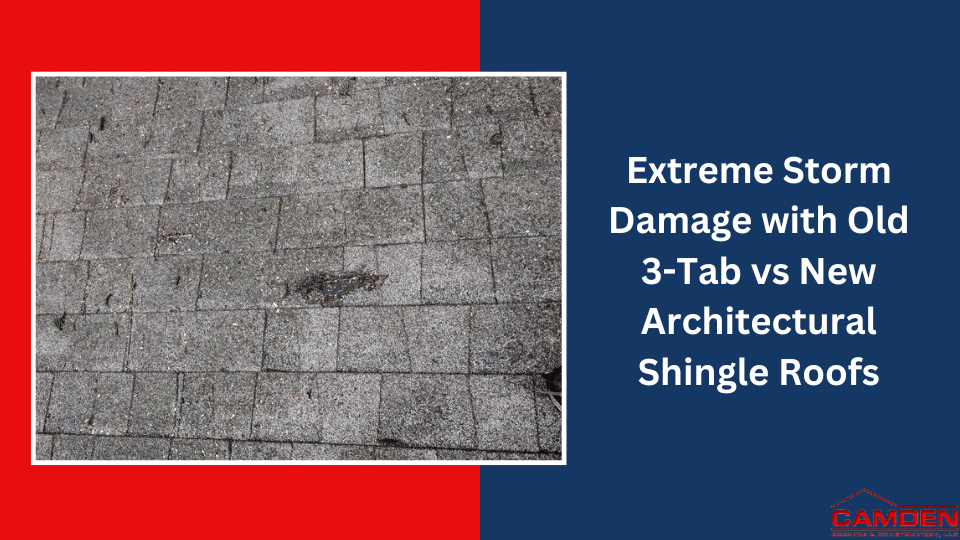Preparing Your Roof for Heavy Rainfall
Preparing Your Roof for Heavy Rainfall with Camden Roofing & Construction. Heavy rainfall can be a double-edged sword for homeowners. While it’s essential for replenishing water sources and maintaining lush landscapes, excessive rain can also wreak havoc on your home’s roof if it’s not adequately prepared. In this guide, we’ll explore the importance of preparing your roof for heavy rainfall and provide valuable tips for protection and maintenance.

Why Prepare Your Roof for Heavy Rainfall?
Heavy rainfall can pose several threats to your home’s roof and overall structural integrity. It’s crucial to prepare your roof to mitigate potential problems:
Water Damage: Excessive rain can lead to water infiltration through your roof. This can result in ceiling stains, structural damage, and even mold growth if left unchecked.
Roof Leaks: Roofs that are not properly maintained or have existing vulnerabilities are more susceptible to leaks during heavy rainfall.
Gutter Overflows: Rainwater can overwhelm clogged gutters, causing them to overflow. This can lead to water pooling around your foundation, potentially causing structural issues.
Flashing and Seal Damage: The continuous cycle of wetting and drying during heavy rainfall can damage roof flashings and seals, which can lead to leaks over time.
Roof Collapse: In extreme cases, prolonged heavy rainfall can saturate roofing materials to the point of structural failure, leading to a roof collapse.
Protection and Maintenance Tips:
Regular Inspections: Perform regular roof inspections to identify and address any existing issues. Look for damaged or missing shingles, deteriorated flashing, and signs of water damage inside your home.
Clean Gutters: Keep your gutters and downspouts clean and free of debris. Clogged gutters can lead to water overflowing onto your roof or pooling near your foundation.
Flashing and Seal Inspection: Pay close attention to roof flashings and seals around vents, chimneys, and skylights. Ensure they are in good condition and not deteriorating.
Secure Roof Shingles: If you have loose or missing shingles, replace or repair them promptly. Damaged shingles can allow water to penetrate your roof.
Trim Overhanging Branches: Trim tree branches that overhang your roof. Falling branches can cause significant damage during heavy rainfall and storms.
Attic Ventilation: Ensure proper attic ventilation to prevent moisture buildup and reduce the risk of mold and mildew growth. Proper ventilation can also help maintain your roof’s integrity.
Sealing Penetrations: Seal any roof penetrations, such as vents and pipes, with high-quality sealants. Check these areas regularly for signs of wear and tear.
Roof Coating: Consider applying a protective roof coating if your roof is susceptible to heavy rainfall. These coatings can provide an additional layer of defense against water infiltration.
Professional Inspection: Schedule a professional roof inspection if you’re unsure about your roof’s condition. Roofing experts can identify hidden issues and provide recommendations for maintenance or repairs.
Emergency Preparedness: Have an emergency plan in place in case your roof does experience significant damage during heavy rainfall. This can include knowing how to safely evacuate your home and having contact information for roofing professionals readily available.
What to Do During Heavy Rainfall:
In addition to prepping your roof, it’s important to know what steps to take during heavy rainfall to minimize damage:
Monitor Weather Alerts: Stay informed about weather forecasts and warnings. Be prepared to take action if severe weather is expected.
Check for Leaks: If you notice water dripping from your ceiling or signs of water damage, try to locate the source of the leak. Place buckets or towels to collect water and minimize further damage.
Avoid Ceiling Sagging: If you notice your ceiling sagging due to water accumulation, evacuate the area immediately, as this can indicate a structural issue. Contact a professional for help.
Turn Off Electricity: In case of significant water infiltration, turn off electricity in affected areas to prevent electrical hazards.
Stay Safe: During heavy rainfall, it’s essential to prioritize safety. Avoid going on your roof or attempting repairs during a storm. Leave such tasks to professionals.
Document Damage: Take photos or videos of any damage caused by heavy rainfall. This documentation can be valuable for insurance claims.
The Importance of Insurance:
Homeowners’ insurance is a crucial aspect of preparing for heavy rainfall and potential roof damage. Review your insurance policy to ensure you have adequate coverage for water damage, roof repairs, and any other related issues. In the event of severe damage, promptly contact your insurance provider to start the claims process.
Conclusion:
Preparing your roof for heavy rainfall and maintaining it properly can safeguard your home against potential damage. Regular inspections, gutter cleaning, and addressing minor issues promptly can go a long way in protecting your roof during heavy downpours. In case of severe weather, prioritize safety, and seek professional assistance when necessary. By taking proactive measures, you can enjoy peace of mind.
For more information, contact Camden Roofing & Construction, LLC in Charlotte and Raleigh, NC, at 919-729-5050.




